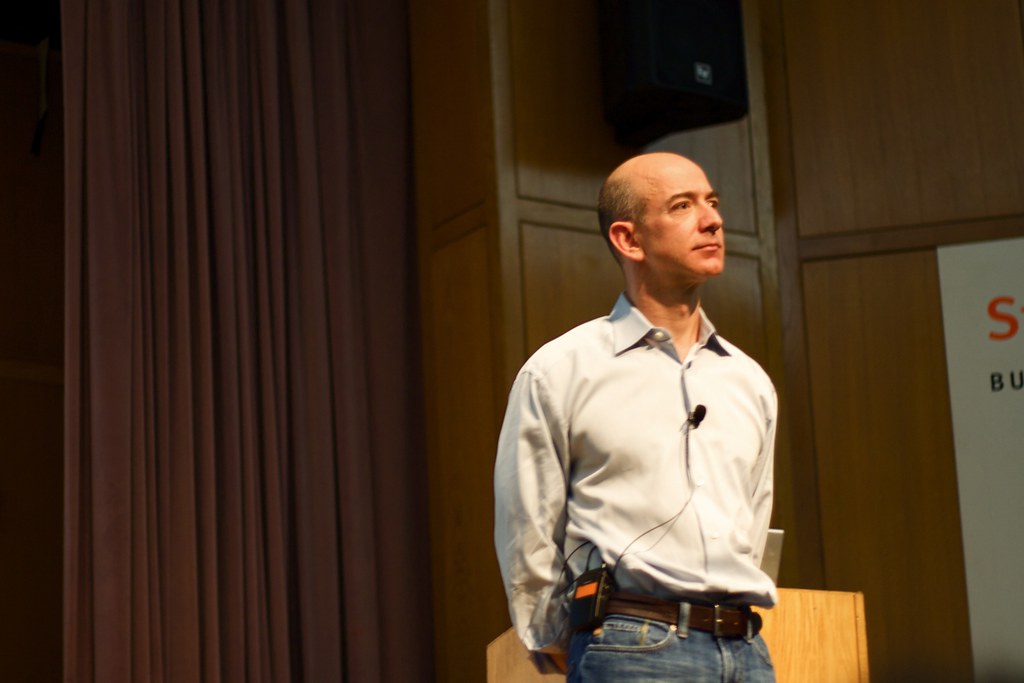What separates visionaries like Bezos from the rest of us isn’t luck or resources—it’s their ability to see probability where others see impossibility. While everyone else dismissed his ambitions as crazy, Bezos was already calculating the path to success. He wasn’t dreaming; he was planning with conviction.
From Probability to Reality
The journey from probability to reality is what defines true entrepreneurs. When our company sold in 1995 for $3.4 billion, it seemed like an astronomical sum. The amount was almost unfathomable at the time. Yet compared to today’s trillion-dollar valuations, it now appears modest.
This perspective shift teaches us something profound about success and vision. What seems impossible today becomes tomorrow’s baseline. The trillion-dollar valuation that once seemed absurd is now achieved by multiple companies.
I’ve witnessed this pattern repeatedly throughout my career in sports, entertainment, and business coaching. The most successful people share this trait: they don’t just hope for success—they expect it with such certainty that it becomes inevitable.
View this post on Instagram
The Power of Inspired Probability
There’s a significant difference between wishful thinking and what I call “inspired probability.” Bezos wasn’t just daydreaming about wealth; he was inspired to create something revolutionary. This inspiration, combined with strategic thinking, transformed his probability into our current reality.
When we examine the traits of successful entrepreneurs and visionaries, we consistently find:
- Unwavering belief in their vision despite external skepticism
- The ability to see market opportunities others miss
- Persistence through inevitable challenges and setbacks
- Strategic thinking that transforms big goals into actionable steps
These traits aren’t magical or innate—they’re cultivated through mindset and practice. Anyone can develop them with dedication and the right approach.
Thinking Beyond Current Limitations
What’s particularly fascinating about visionaries is how they continually push beyond current limitations. The trillion-dollar valuation that seems staggering today will eventually be viewed as modest. As Bezos demonstrated, today’s ceiling becomes tomorrow’s floor.
I often remind my coaching clients that our perception of what’s possible is our greatest limitation. When we expand our vision, we expand our results. The entrepreneurs who will build the first “zillion-dollar” companies (whatever that future number may be) are already forming their probabilities today.
This principle applies beyond business. In sports, entertainment, personal development, and every other field, those who achieve extraordinary results first believe in extraordinary possibilities.
Creating Your Own Probabilities
The most important question isn’t whether you believe someone else’s vision is possible—it’s whether you believe in your own. What probabilities are you creating today that others might laugh at?
My experience working with top entrepreneurs and athletes has taught me that success leaves clues. The pattern is consistent:
- Identify a vision that inspires genuine passion
- Develop absolute certainty in its probability
- Create strategic plans to transform probability into reality
- Persist despite inevitable skepticism and obstacles
- Continually expand your vision as you achieve milestones
This framework has helped countless individuals transform their own “selling books from a garage” moments into industry-changing successes.
The next time someone shares a vision that seems impossible, remember Bezos. Remember that what seems like crumbs today may be viewed as modest tomorrow. And most importantly, remember that the greatest limitation to your success is not external circumstances but your own perception of what’s probable.
Who will be laughing when your probability becomes reality?
Frequently Asked Questions
Q: How did Jeff Bezos transform his vision into reality?
Jeff Bezos transformed his vision by first believing in the probability of his success with absolute certainty. He combined this unwavering belief with strategic planning and persistent execution, even when selling books from his garage seemed like an unlikely path to becoming the world’s richest person. His ability to see market opportunities others missed was crucial to Amazon’s growth into a trillion-dollar company.
Q: What is “inspired probability” and how does it differ from wishful thinking?
Inspired probability combines genuine passion with strategic certainty. Unlike wishful thinking, which relies on hope without action, inspired probability involves developing absolute conviction in your vision while creating concrete plans to achieve it. It’s the difference between saying “I wish I could build a trillion-dollar company” versus mapping out the specific steps to make it happen while maintaining unwavering belief in the outcome.
Q: Can anyone develop the visionary thinking that Bezos demonstrated?
Yes, visionary thinking can be developed through consistent practice and mindset shifts. It begins with expanding your perception of what’s possible and challenging self-imposed limitations. By studying successful visionaries, creating bold goals that genuinely inspire you, and developing strategic plans to achieve them, you can cultivate the same forward-thinking approach that characterizes great entrepreneurs.
Q: Why do trillion-dollar valuations seem normal today when they once seemed impossible?
Our perception of what constitutes extraordinary success continually evolves as pioneers push boundaries. When companies like Amazon and Apple first reached trillion-dollar valuations, it was historic. Now, multiple companies have achieved this milestone, shifting our baseline for exceptional business success. This pattern repeats throughout history—what seems unattainable today becomes tomorrow’s standard as visionaries continually redefine what’s possible.
Q: What’s the most common obstacle preventing people from achieving extraordinary success?
The greatest obstacle is often self-limitation—the inability to believe in possibilities beyond current norms. Many people dismiss ambitious visions as unrealistic before even attempting them. This skepticism becomes a self-fulfilling prophecy. Those who achieve extraordinary results first overcome this mental barrier, developing genuine belief in their vision’s probability despite external doubts. With this foundation, they can then address practical challenges with creativity and persistence.







